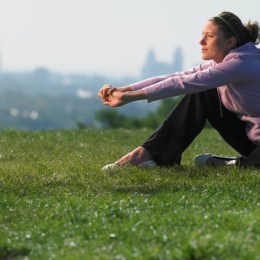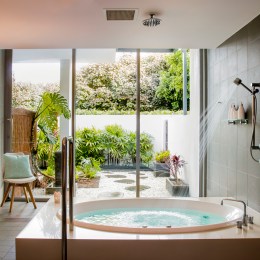Community, heritage, holistic offerings – here’s what you need to know about wellness tourism.
Defined by the Global Wellness Institute (GWI) as “travel associated with the pursuit of maintaining or enhancing one’s personal wellbeing”, wellness tourism is an enormous focus for the industry right now, completely overhauling the way consumers travel, and in turn forcing those in the spa, hotel spas, hospitality and tourism spaces to shift their views on traveller demands and expectations. Holidays aren’t purely about destinations, sites and attractions anymore, and a large chunk of holidaymakers are instead seeking personal enlightenment, healthy meal regimes, guided health plans, and other activities with the objective of enhanced wellbeing.
According to GWI, between 2015 and 2017 the wellness tourism market shot up from $563bn to$639bn – or 6.5% annually; more than twice the speed of growth of the tourism at large. It is predicted that by 2022, the market will reach an enormous $919bn (18% of all global tourism) with over a billion individual wellness trips taking place around the world. So who are these wellness travellers predominantly?
Well according to Anne Dimon, president of the Wellness Tourism Association, while anyone can be wellness travellers, the bulk are often higher-educated women aged 30 and 60. Those that sign on purely for travel experiences with an exclusive focus on wellness or wellness-centred experiences or destinations are described as primary wellness travellers. Those incorporating wellness activities into their standard business or leisure vacations are known as secondary wellness travellers. Beth McGroarty, director of research at GWI, says primary wellness travellers have a significantly larger spend than their secondary counterparts. “[Primary] travellers at the domestic level spend about 178% more than your average traveller,” McGroarty says. “And at the international level, they spend 53% more.”
With these trends and figures in mind, hotels are now upping their game to appeal further to the wellness-minded tourist (with hotel spas playing a huge role) and health and wellness-related businesses are also being forced to more intricately consider travellers when planning their offerings.
Keen for a slice of the wellness tourism movement? These are the themes experts say are crucial to incorporate into your business and/or services:
- A lack of engagement with others has long been pinpointed as a cause of depression, so at the moment, community is a big theme throughout the wellbeing landscape – even throughout hotels and gyms. Emphasis is being placed on the introduction of group activities, shared dining to encourage socialisation, bonding exercises etc.
- It’s a whole package – there is no such thing as just a spa treatment. The pampering and relaxation experienced during spa treatments, as well as the topical benefits, are only a small part of a person’s wellbeing journey. We as practitioners and service providers can facilitate improved experiences and complementary treatments (including physical health, diet and nutrition, mental wellbeing and more) by either offering them ourselves, or referring to someone else who can.
- Ongoing care is becoming a bigger focus. How much time do you dedicate to a visitor’s wellbeing after they leave you? Are you giving them homecare instructions and an ongoing plan to follow once they leave, or a date to check back in? How many times do you follow up? Are you keeping the connection and care alive beyond their time with you, or are you simply ticking a box and letting them walk out the door? Imagine the sense of trust and gratitude you can develop if a visitor knows you still care about their health once they leave you.
- Incorporating culture is a crucial element to engage wellness travellers. Experiencing the unique culture of a new place is of course the reason most of us travel, so it makes sense to include them throughout your experiences (whether spa treatments or wellness activities) in order to excite visitors with some local flavour and facilitate a deeper connection with you, the local community, and its heritage.
Wellness Tourism has come a long way, but of course, isn’t exactly a new concept. Founder of Spa Wellness Travel, Karen Goudge, has been helping travellers book their dream wellness escape for almost 20 years. Read her take on how Wellness Tourism has changed since the early 2000s in our current issue of SPA+CLINIC:
Stay up to date with all things wellness tourism news, stats and trends by subscribing to our free weekly newsletter and/or online news alerts, or head over to register for Australia’s first wellness tourism summit this March.





